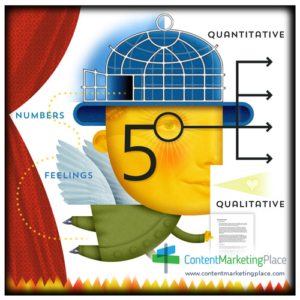The ideal case study covers two complementary areas: both the qualitative and quantitative sides of the case in question.
 A case study tells the story of an organizational accomplishment, the problems posed, the challenges met and the competency that had to be mustered for the story to have a happy ending. As a story, a case study has to be more than a bare recital of numbers. That recital has its place, but its rightful place is in a chart, a spreadsheet or, perhaps, a sidebar.
A case study tells the story of an organizational accomplishment, the problems posed, the challenges met and the competency that had to be mustered for the story to have a happy ending. As a story, a case study has to be more than a bare recital of numbers. That recital has its place, but its rightful place is in a chart, a spreadsheet or, perhaps, a sidebar.
Too much quantitative information stops the story dead in its tracks. After all, a case study is there to be read. You want people to be interested, to see how it all turned out and how you got there. It has a very human dimension: Behind all the figures are the people who made things happen.
Numbers, though, need to be there. They’re evidence, the proof that the story means something. They make things credible. They also allow readers to see the story as one with a business application and to put themselves in the picture. The quantitative facts that applied to the case in question could just as well apply to the readers’ business. Those are results they can imagine in their own context.
The best case studies, then, find the right balance between the qualitative factors that make a story compelling and the quantitative factors that give it weight. A case study without the first is a failure because no one reads it. A case study without the second is a failure because no one believes it or, at the very least, no one grasps the story’s practical application.
In some situations, however, a case study is lacking in one factor or the other.
Sometimes, that’s because the study’s author is not asking the right questions, which itself can happen when he doesn’t understand the subject well enough. The best authors, though, know what to ask, what questions will draw out the information that needs to be highlighted, and they take the time to learn enough about the company or the industry to get past that obstacle. They don’t have to be experts capable of taking over operations next week, but they have to be quick studies, smart and willing to learn.
At other times, the limitation is built into the situation and even the best author comes up short, unable to get right to the perfect balance of qualitative and quantitative.
With some very technical subjects, for example, there can be an overabundance of the quantitative. The story simply can’t be told without reams of numbers. When that happens, you have to rely on the writer’s art to turn data into something that the reader can relate to. It may not be the highest art, but it takes a certain artful approach to get that done.
At the other end of the spectrum sits the case study that overdoes the qualitative. That problem can result from the nature of the subject, or it might be the result of something as simple as the need to keep things confidential, either because they’re trade secrets or because they’re subject to agreements with other parties.
In that case, the writer needs to tease the quantitative facts out of the qualitative story. What kind of evidence would the reader want to see? What would convince a prospective customer? What real-world benefit can you highlight that would make a difference to the reader?
Here, the writer has to balance art with science. The story is there to be told, but it needs the support of quantitative evidence. That evidence may not be obvious, but it is almost always there. It may need to be approached from a new perspective, but a good writer who takes the time to understand the subject will find the way there. Quantitative evidence can be explained in different ways. It can be examined from multiple points of view. If quantitative evidence of one sort is lacking, there may be an abundance of other evidence ready to be deployed, but it takes the right author to find it and to see its relevance.
There are a lot of bad case studies out there. Some are bad because they’re simply badly written, but a lot of them don’t work because they miss the right balance between the two elements, a job made more complicated by the fact that the ideal balance changes with the subject. When the balance is right, however, a case study can do its job remarkably well.



